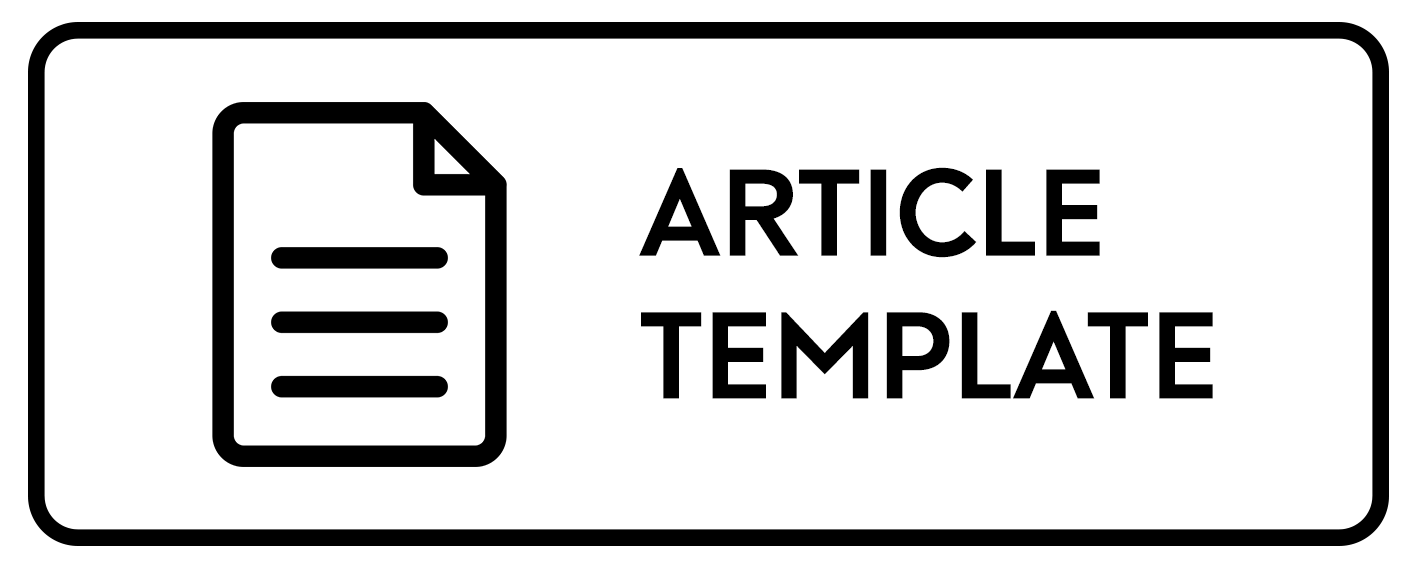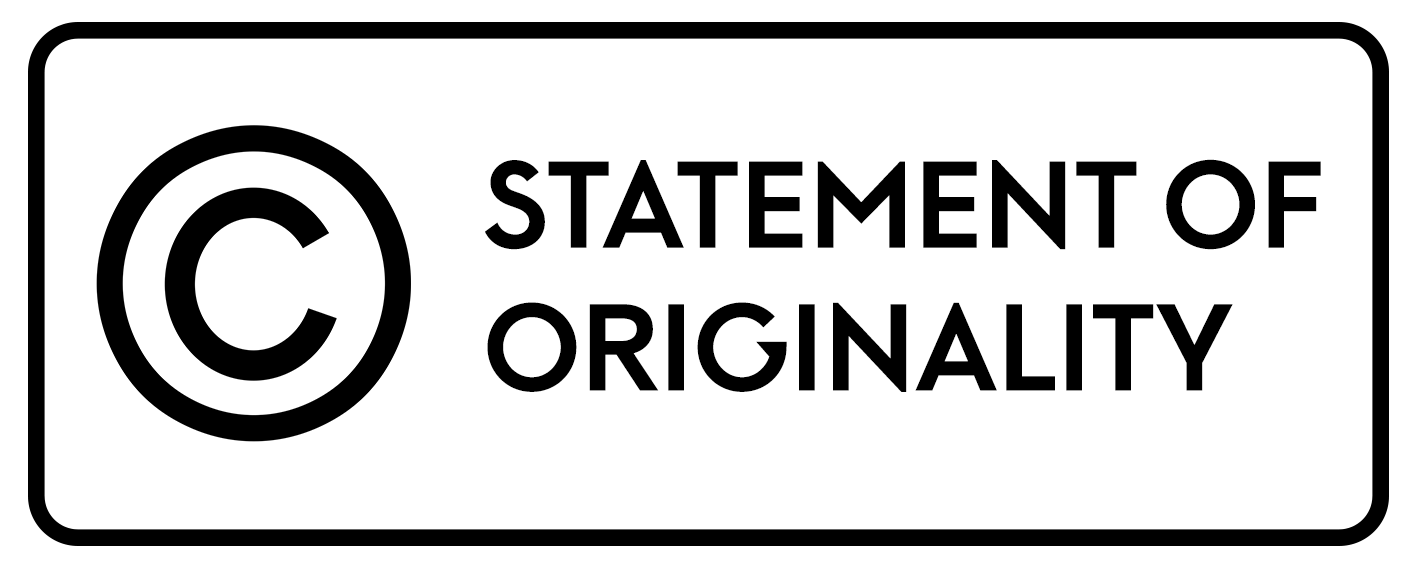AUTHOR GUIDELINES
Before prepare and submit article manuscripts, please note that author(s) are discouraged from withdrawing submitted papers after it is in the publication process (review, copyedit, layout, etc.,). During the time, Journal Elscho had spent valuable resources besides time spent in the process.
Journal ELSCHO accepts the following types of papers:
- Research Articles (up to ~5000 words, including references, notes and captions, or ~5 printed pages) are expected to present a major advance. Research Articles include an abstract, an introduction, up to six figures or tables, sections with brief subheadings, and upwards of 30 references. Materials and Methods should usually be included in supplementary materials, which should also include information needed to support the paper's conclusions.
- Reports (up to 5000 words including references, notes and captions or ~3 printed pages) present important new research results of broad significance. Reports should include an abstract, an introductory paragraph, up to four figures or tables, and about 30 references. Materials and Methods should usually be included in supplementary materials, which should also include information needed to support the paper's conclusions
- Reviews (up to 3500 words including references, notes and captions) describe new developments of interdisciplinary significance and highlight future directions. They include an abstract, an introduction that outlines the main theme, brief subheadings, and an outline of important unresolved questions. A maximum of 30 references is suggested. Most Reviews are solicited by the editors, but unsolicited submissions may also be considered.
The Author’s Guideline of Journal ELSCHO the publication year of 2022
1. Introduction
Journal Elscho is a national scientific journal that is open to finding innovation, creativity and new things related to elementary education process. Journal ELSCHO is a peer review journal published by UIR Press. The aim of the journal is to facilitate scientific publication of the results of researches and participate to boost the quality and quantity of research for academics and researchers. Journal ELSCHO published two times a year, in January and July
2. The Manuscript General Guidelines
The manuscript text general guidelines are as follows:
- The manuscript is the authentic research result that has not been published yet in other publication media or publishing houses.
- Manuscript accepted standard written in Indonesian;
- The manuscript text tought to be written as this article template. The article is written on A4-size paper (210x297 mm), with custom margins as follows: left 1.27 inches, right 1.27 inches, bottom 2.54 inches and top 2.54 inches, Times New Roman theme font, 12 pt font size, and 1 line-spacing.
- The manuscript does not contain any plagiarism element. The editorial board will directly reject the text that indicates plagiarism. We use plagiarism software to check your manuscript.
- The manuscript consists of five main headings: Pendahuluan (Introduction); Metode (Methods); Hasil dan Pembahasan (Results and Discussion); Kesimpulan (Conclusions); Daftar Pustaka (References);
- Title of the article should be as short as possible, and should represent the content of the manuscript;
- Author names are written under the title, followed by author affiliation and e-mail address;
- Abstract written in Indonesian and English. Abstract not exceeding 200 words, write a narrative consists goals / objectives, methods, and findings of the research / writing;
- Keywords: words or phrases that are important, specific, or representative for articles and consisting of 3-5 words;
- The manuscript must be written in the following template;
3. The Guidelines for the Manuscript Body Text
The title of the manuscript: The title should be informative and be written both briefly and clearly. It cannot diverse multi interpretations. It has to be pinpoint with the issues that will be discussed. The title is written with the font type (Calisto 20pt, Bold, Sentence case, dan Center). The article title does not contain any uncommon abbreviation. The main ideas should be written first and followed then by its explanations. A maximum of fifteen word article titles, 20pt font size, with bold and middle text formatting options.
Abstract: The abstract has to be written within 200 words maximum and followed by with three to five keywords and arranged alphabetically. The abstract should be typed as concise as possible and should be composed of: problem statement, research purposes, method, scientific finding results, and short conclusion. The abstract should only be typed in one paragraph and one-column format.
Introduction: The introduction must contain (sortly and consecutively) a general background and a literature review (state of the art) as the basic of the brand new research question, statements of the brand new scientific article, main research problems, and the hypothesis. In the final part of the introduction, the purpose of the article writing should be stated. They should be represented in the literature review to show the brand new of the scientific article.
Methods: The method explains how the research is conducted, including research design, data collection, research instrument and analytic methods. This part should be narated.
Results and Discussion: This part consists of the research results and how they are discussed. The results obtained from the research have to be supported by sufficient data. The research results and the discovery must be the answers or the research hypothesis or research question stated previously in the introduction part.
Conclusion: This is the final part containing conclusions, limitations and recommendations. The conclusions will be the answers of the hypothesis or research question, the research purposes and the research discoveries. The conclusions should not contain only the repetition of the results and discussions. It should be the summary of the research results as the author expects in the research purposes or the hypothesis. Research limitations and recommendations contain deficiency in the research and suggestions associated with further ideas from the research.
References: All the references that used in the article must be listed in this part. In this part, all the used references must be taken from primary sources (scientific journals and the least number is 70% from all the references) that published in the last ten years. Each article should has at least ten references and cite Journal Elscho articles, at least 3 articles.
4. The Guidelines for the Citations and References
All the served data or quotes in the article taken from the other author articles should attach the reference sources. The references should use a reference application management such as Mendeley, End Note, or Zotero. The writing format that used in Journal Sport Area follows the format applied by APA 7th Edition (American Psychological Association).
For example:
Article journal:
Araujo, G. D., Gobatto, F. M., Papoti, M., Camargo, B., & Gobatto, C. (2014). Anaerobic and Aerobic Performances in Elite Basketball Players. Journal of Human Kinetics, 42, 137–147. https://doi.org/10.2478/hukin-2014-0068
Hoffmann, J. J., Reed, J. P., Leiting, K., Chiang, C. Y., & Stone, M. H. (2014). Repeated sprints, high-intensity interval training, small-sided games: Theory and application to field sports. International Journal of Sports Physiology and Performance, 9(2), 352–357. https://doi.org/10.1123/IJSPP.2013-0189
Book:
Maksum, A. (2008). Metodologi Penelitian. Surabaya: Univesity Press.
Coker, C. A. (2017). Motor learning and control for practitioners. New York: Routledge.
Proceedings:
Nurkholis, M. (2015). Kontribusi Pendidikan Jasmani dalamMenciptakan SDM yang Berdaya Saing di Era Global. Prosiding. Seminar Nasional Olahraga UNY Yogyakarta; 192-201.
Figures
All Figures (charts, diagrams, line drawings, web pages/screenshots, and photographic images) should be submitted in electronic form. All Figures should be of high quality, legible and numbered consecutively with Arabic numerals. Graphics may be supplied in color to facilitate their appearance on the online database. Figures created in MS Word, MS PowerPoint, MS Excel should be supplied in their native formats. Electronic figures created in other applications should be copied from the origination software and pasted into MS Word template document. Photographic images should be inserted in the main body of the article and of high quality.
Tables
Tables should be typed and included in the main body of the article. The position of tables should be inserted in the text as close to the point of reference as possible. Ensure that any superscripts or asterisks are shown next to the relevant items and have corresponding explanations displayed as footnotes to the table, figure or plate.
5. The Online Submission Manuscript Guidelines
The manuscript text must be submitted by one of two systems (the Second procedure is more preferable):
- The document should submitted by Online Submission System in the Journal Sport Area E-journal portal.
- Firstly, the author should register as either an author or reviewer (checking role as author or reviewer) in the “Registerâ€.
- After the registration step is completed, log in as an author, click in “New Submissionâ€. The article submission stage consists of five stages, such as: (1). Start, (2). Upload Submission, (3). Enter Metadata, (4). Upload Supplementary Files, (5). Confirmation.
- In the “Start†column, choose Journal Section (nearby Volume and Issue will publish), check all the checklists.
- In the “Upload Submission†Columns, upload the manuscript files in MSWord format in this column.
- In the “Enter Metadata†columns, fill in with all the author data and affiliation. Including the Journal Title, Abstract, Keywords, and References.
- In the “Upload Supplementary Files†columns, the author is allowed to upload supplementary files, the statement letter, or any other else.
- In the “Confirmation†columns, if the data you entered are all correct already, then click “Finish Submissionâ€.
- If the author has difficulties in the submission process through the online system, please contact Journal Sport Area editorial team at [email protected]



.png)




